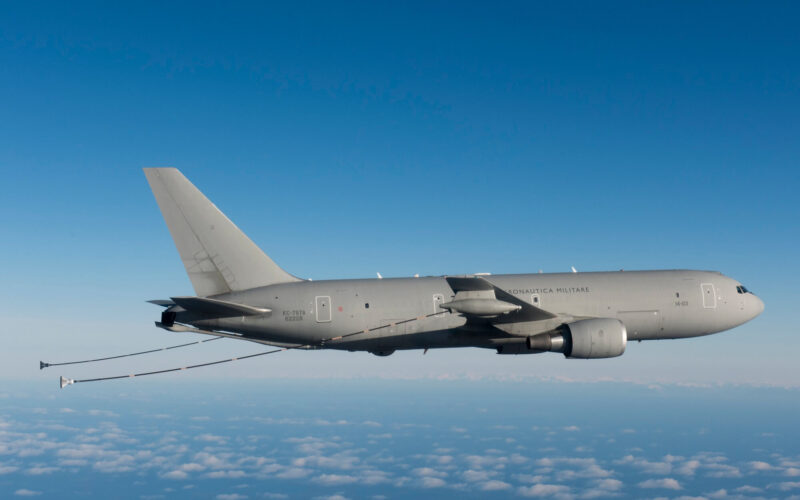The Italian procurement agency has recommended the acquisition of six Boeing KC-46A Pegasus tankers to renew the tanker fleet of the Italian Air Force.
The Directorate of Aeronautical Armaments and Airworthiness (ARMAEREO) released a report on the “Renewal, Upgrade and Integrated Logistic Support of the Aeronautica Militare Heavy Multirole Tanker Fleet” on November 2, 2022.
The study states that the four KC-767A tankers currently operated by the Aeronautica Militare, the Italian Air Force, should be replaced by six new KC-767B (the Italian designation for the KC-46A) aircraft. The total acquisition and support program, which should begin in 2023, was valued at €1.1 billion.
Upon review, the agency determined that the acquisition of six new Pegasus aircraft and the return of the four KC-767A to Boeing was the only solution to ensure “the full configurative commonality of the fleet.” The main competitor of the Pegasus, the Airbus A330 MRTT, was seemingly not considered.
This decision contradicts previous plans that envisioned the acquisition of only two Pegasus aircraft and the upgrade of the four current Italian tankers to the same standard. As a reminder, both the KC-46A and the KC-767A are based on the same airframe, the Boeing 767 commercial airliner.
In August 2022, Boeing was awarded a contract by the Italian Air Force to support the four KC-767A tankers through December 2025.
The KC-767A tanker was developed by Boeing for the Aeronautica Militare and the Japanese Air Self-Defense Force, which ordered four aircraft each.
Difficult beginnings
In 2017 and 2018, Japan also ordered two KC-46A Pegasus aircraft to replace its KC-767Js. Italy will become the fourth operator of the aircraft after the United States, Japan, and Israel.
After being introduced in 2019, the KC-46A Pegasus was marred by a series of development and production shortcomings. For example, the operational refueling missions were temporarily restricted to the use of the aircraft’s centerline drogue system after issues with the boom were detected.
In August 2021, the USAF Air Mobility Command finally approved the use of the refueling boom for operational missions. In September 2022, the aircraft was finally cleared for global deployment.

